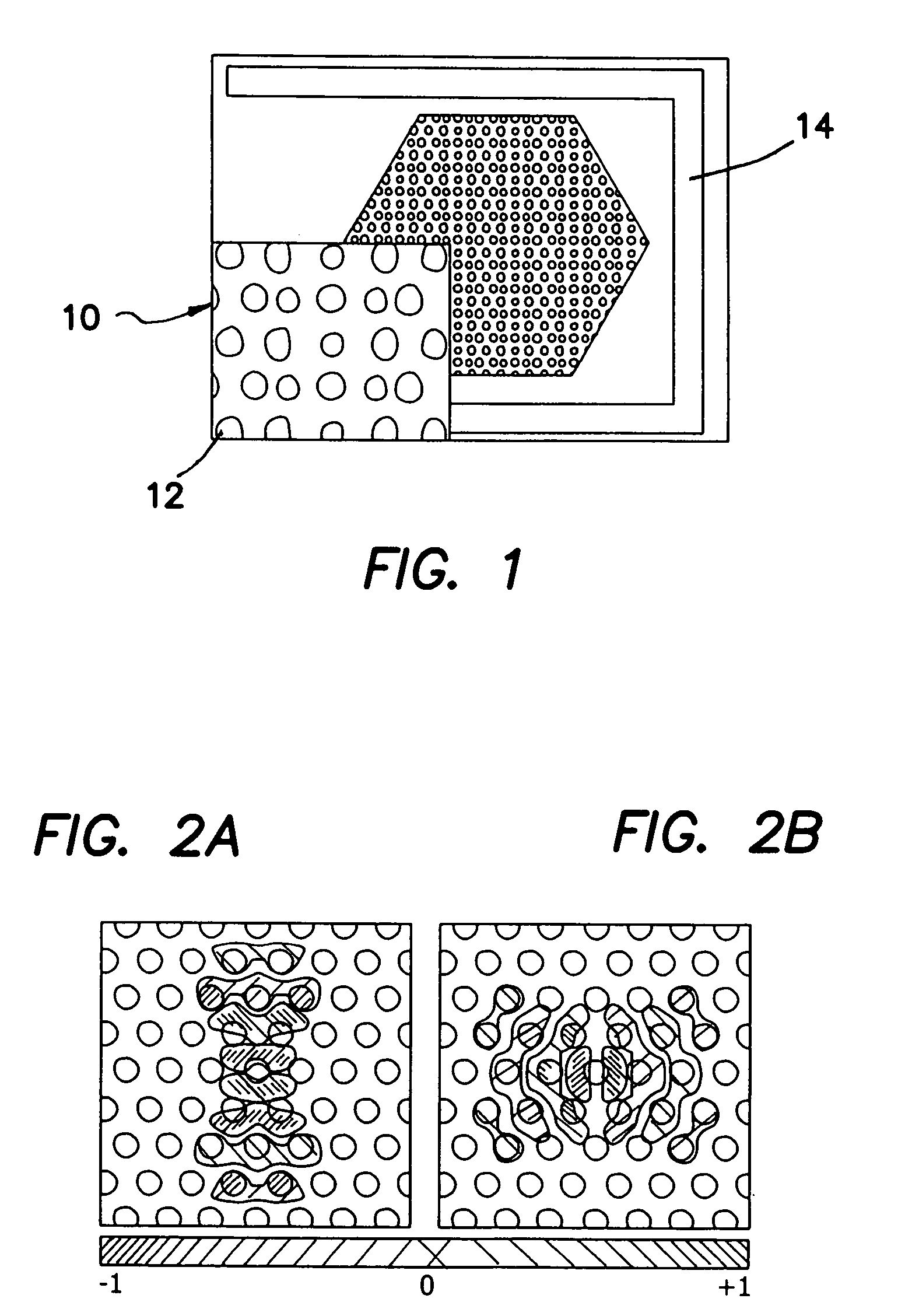Optically triggered Q-switched photonic crystal laser and method of switching the same
- Summary
- Abstract
- Description
- Claims
- Application Information
AI Technical Summary
Benefits of technology
Problems solved by technology
Method used
Image
Examples
Embodiment Construction
[0030] The illustrated embodiment involves the use of nonlinear liquids to create optically triggered quality-factor-switched (Q-switched) photonic crystal lasers 18. By infiltrating a photonic crystal laser 18 with an optically birefringent liquid crystal 34, and controlling the liquid crystal molecular orientation with a layer of photo addressable polymer 16, the lasing mode can be switched between X-polarized and Y-polarized dipole modes. The infiltrated liquid crystal 34 enables control over both polarization and wavelength emitted by the photonic crystal laser 18 and offers an example of an electromagnetically optimized device in which high optical fields and nonlinear material interact intimately.
[0031] Microfabricated photonic crystal cavities 10 enable the efficient interaction of the confined lasing field with various optical materials. Although the light emission of the lasing mode is generated within the semiconductor material, it is possible to design high-Q optical cav...
PUM
 Login to View More
Login to View More Abstract
Description
Claims
Application Information
 Login to View More
Login to View More - R&D
- Intellectual Property
- Life Sciences
- Materials
- Tech Scout
- Unparalleled Data Quality
- Higher Quality Content
- 60% Fewer Hallucinations
Browse by: Latest US Patents, China's latest patents, Technical Efficacy Thesaurus, Application Domain, Technology Topic, Popular Technical Reports.
© 2025 PatSnap. All rights reserved.Legal|Privacy policy|Modern Slavery Act Transparency Statement|Sitemap|About US| Contact US: help@patsnap.com



